- AI
- Molecular Imaging
- CT
- X-Ray
- Ultrasound
- MRI
- Facility Management
- Mammography
Mucinous Cystadenoma
Mucinous cystadenom: 33-year-old female with abdominal distension and suspected ovarian mass. CT scan of abdomen and pelvis done with oral and intravenous contrast with multiple axial sections along with coronal and sagittal reformation.
Clinical History: A 33-year-old female with abdominal distension and suspected ovarian mass.
CT scan of abdomen and pelvis done with oral and intravenous contrast with multiple axial sections along with coronal and sagittal reformation.



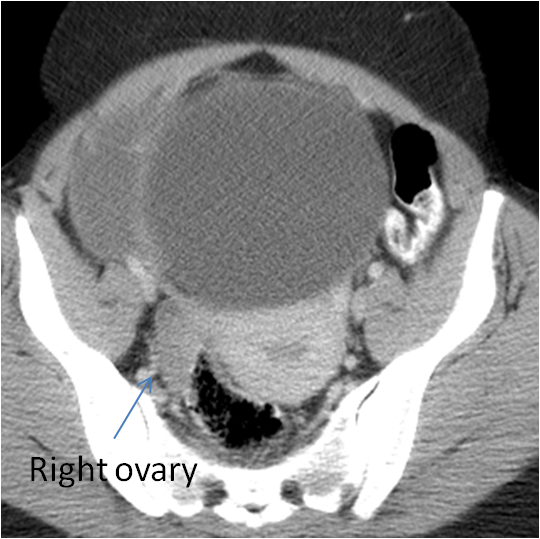
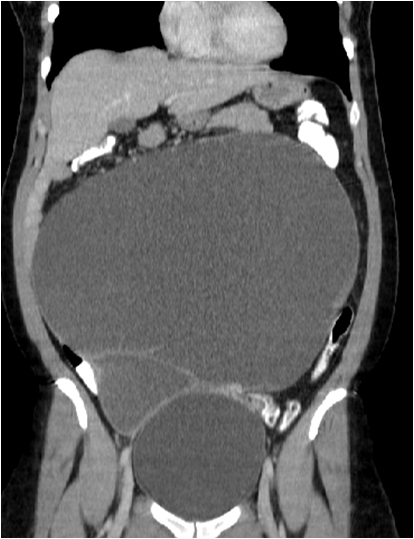

Findings: Large abdomino-pelvic cystic mass with thin septations. No enhancing nodule. Right ovary is seen and appears within normal limit. Features are suggestive of benign mucinous cyst adenoma of left ovary.
Multi-planner, multi-sequential MRI of abdomen and pelvis performed with and without contrast. Large multi-loculated cystic lesion arising from the left adnexa measuring maximum dimension of 30 x 11 x 27 cm in craniocaudal, AP, and mediolateral dimension.
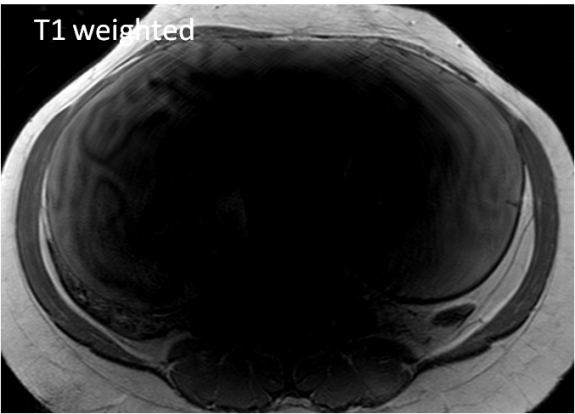

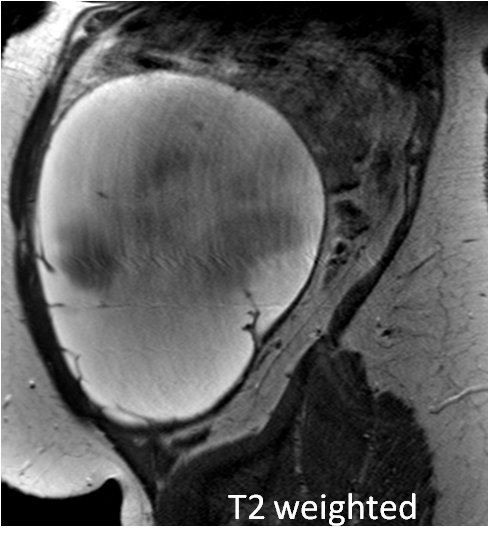

Post gadolinium T1 images shows no enhancement of mass or septa.
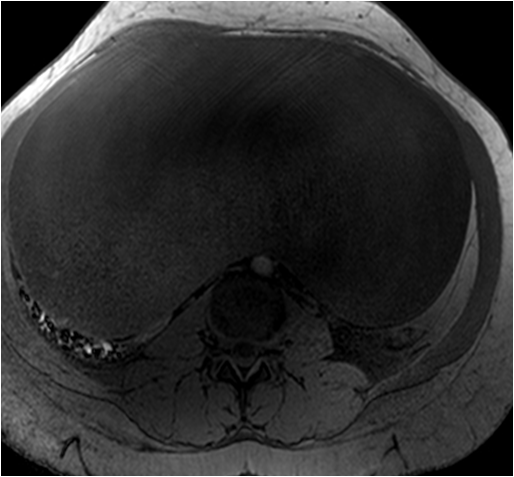


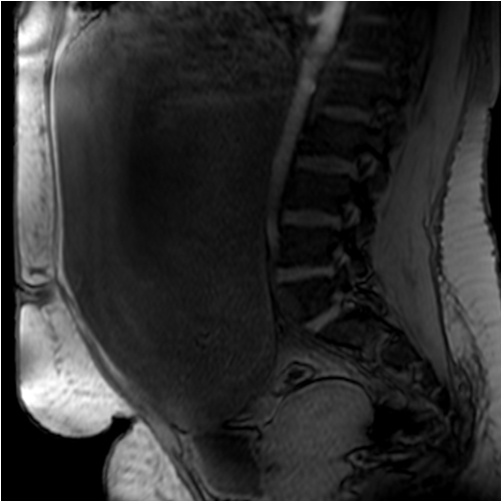
The lesion demonstrated multiple internal thin septations. The mass exerts significant mass effect on the bladder and the uterus which is shifted to the left side. The right adnexum appears unremarkable. No free fluid identified in the pelvis. No obvious retroperitoneal lymph nodes seen. No obvious carcinomatosis identified. The appearance of the lesion is mostly in keeping with a benign epithelial ovarian neoplasm. Given the size of the mass and the presence of multiple septations, the appearance is most likely in keeping with mucinous cystadenoma.
Post-op pathological diagnosis: Mucinous cystadenoma.
Overview: Mucinous cystadenoma is a type of tumor in the cystadenoma grouping. There are four major categories of ovarian tumors:
1. Epithelial tumors (65 percent to 75 percent) - serous or mucinous cystadenoma/carcinoma, clear cell carcinoma, Brenner tumor
2. Germ cell tumors (15 percent) - dysgerminoma, embryonal cell cancer, choriocarcinoma, teratoma
3. Sex-chord-stromal tumors (5 percent to 10 percent) - granulosa cell tumor, thecoma, fibroma
4. Metastatic tumors (10 percent) - uterine, stomach, colon, breast, lymphoma
Mucinous cystadenomas make up 15 percent to 20 percent of all ovarian tumors. They often become very large and can extend up into the abdomen. Pseudomyxoma peritonei can result if the tumor ruptures and spills its contents into the abdomen.
These tumors are usually evaluated using ultrasound, CT scan, or MRI. Findings on imaging studies are nonspecific. These ovarian tumors are usually multi-septated, cystic masses with thin walls. They also contain varying amounts of solid tissue which consists of proliferating stromal tissue, papillae, or malignant tumor cells.
Mucinous cystadenomas are divided into three categories: benign, borderline, and malignant.
Survival is largely dependent on the histology of the tumor, with a 10-year survival rate of 100 percent for benign tumors, 60 percent for borderline tumors, and only 34 percent for the malignant subtype. There is some difference in ages of the peak incidence for the different subtypes with considerable overlap as described below. In general, benign tumors tend to present earlier, while malignant tumors are often seen later in life.
Benign mucinous cystadenomas compose 80 percent of mucinous ovarian tumors and 20 percent to 25 percent of benign ovarian tumors overall. The peak incidence occurs between 30 to 50 years of age. Benign tumors are bilateral in 5 percent to 10 percent of cases. Borderline mucinous cystadenomas make up about 10 percent of mucinous ovarian neoplasms and are bilateral in 10 percent of cases.
Malignant mucinous cystadenoms are rare, and encompass 10 percent of mucinous ovarian tumors and 5 percent to 10 percent of primary malignant ovarian neoplasms overall. They are bilateral in 15 percent to 30 percent of cases and have a peak incidence between 40 to 70 years of age. It can present in the ovary.
References:
http://emedicine.medscape.com/article/255865-overviewhttp://www.annclinlabsci.org/content/33/4/465.abstracthttp://journals.lww.com/intjgynpathology/Abstract/2005/01000/Mucinous_Tumors_of_the_Ovary__A_Review.3.aspxhttp://www.rbej.com/content/8/1/24http://en.wikipedia.org/wiki/Mucinous_cystadenoma
Sushila Ladumor, MD, FRCR, consultant radiologist with multi-modality imaging experience, working in Medical Imaging Department, King Abdulaziz Medical City, Riyadh, Saudi Arabia
Emerging Perspectives on PSMA PET Radiotracers: An Interview with Kenneth J. Pienta, MD
April 24th 2024In a recent interview, Kenneth J. Pienta, M.D., discussed the impact of piflufolastat F18, current directions in research with other PSMA-targeted radiotracers and future possibilities for the role of PSMA PET in the imaging paradigm for prostate cancer.
Study Reveals Benefits of Photon-Counting CT for Assessing Acute Pulmonary Embolism
April 23rd 2024In comparison to energy-integrating detector CT for the workup of suspected acute pulmonary embolism, the use of photon-counting detector CT reduced radiation dosing by 48 percent, according to newly published research.
